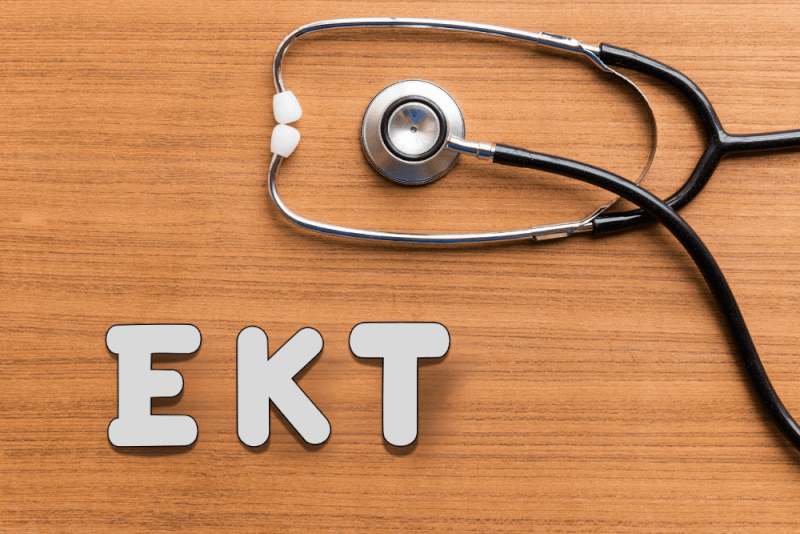What is a panic attack?
It is a state of intense and sudden fear that causes violent physical reactions in the absence of any apparent real danger or cause. When these attacks occur, which can be extremely frightening, it is possible to lose control.
A significant proportion of the population will experience one or two panic attacks in their lifetime. The problem usually disappears when the stressful period is over. However, if panic attacks recur, occur at unexpected times and last for a long time, panic attack disorder can be mentioned.
Although panic attacks do not endanger people's lives, they are frightening for people. This can have a significant impact on patients' lives.
Panic attack diagnosis
In order to diagnose panic attacks, heart and thyroid problems that may cause symptoms must first be ruled out. Among the methods that can be done for this are the following.
- Physical examination
- Various blood tests to identify thyroid problems
- Heart-related tests such as ECG
- Psychological assessment with discussions about symptoms, fears and concerns
In order to diagnose panic disorder, the DMS 5 criteria published by the American Psychiatric Association are taken into consideration. These criteria include the following.
- Panic attacks occur frequently and unexpectedly
- Fear of another attack lasting at least 1 month after an attack
- Fears of losing control, having a heart attack, going crazy, or lashing out
- The panic attacks are not related to drug use, other medical conditions or other psychological disorders
Panic attack symptoms
The symptoms caused by a panic attack come on suddenly. This condition can occur at any time, not only during wakefulness but also during sleep. The frequency of panic attacks varies from person to person.
There are different types of panic attacks. Symptoms usually reach their peak within a few minutes. After the attack is over, it is possible for people to feel exhausted and tired.
Among the symptoms that can be seen in panic attacks are the following.
- Tremor
- Fear of impending danger
- Sweating
- Loss of control
- Fear of death
- Shortness of breath
- Rapid heartbeat
- Feeling of tightness in the throat
- Hot flashes
- A sense of detachment from reality
- Numbness and tingling sensation
- Nausea
- Dizziness
- Fainting
- Headache
- Abdominal cramps
- Chest pain
The most important symptom of a panic attack that exhausts patients is the constant expectation of the next panic attack. This expectation also causes patients to feel intense fear.
Causes of panic attacks
The causes of panic attacks are not fully understood. However, the following factors are thought to play a role in the development of panic attacks.
- Changes in the way some parts of the brain work
- Genetics
- Becoming more sensitive to stress
- Having a temperament prone to negative emotions
- Experiencing great stress
Risk factors for panic attacks
The first symptoms of a panic attack usually appear in late adolescence or early adulthood. In addition, women are more prone to panic attacks than men. Risk factors that may increase the risk of panic attacks include the following.
- Family history of panic attacks
- Physical or sexual abuse in childhood
- Death of a loved one
- Major life stress caused by a serious illness
- Cigarette smoking
- Excessive caffeine consumption
- Being subjected to sexual assault
- Divorce
- Adding another baby to the family
- Traumatic events such as serious accidents
Complications of panic attacks
If panic attacks are left untreated, they can affect all areas of life and lead to a serious deterioration in quality of life. In addition, complications that can be caused by panic attacks include the following.
- Financial problems
- Development of certain phobias, such as fear of driving or leaving the house
- Alcohol or substance abuse
- Frequently seeking medical care for health problems or other medical conditions
- Increased suicidal ideation
- Avoidance of social situations
- Problems at work or school
Some patients develop agoraphobia with panic attacks. In this case, patients may become dependent on others to leave the house.
Panic attack treatment
Panic attack treatment is aimed at reducing the frequency of attacks and enabling patients to continue their daily lives. For this reason, medication and psychotherapy are the main methods used in the treatment of panic disorder. Depending on the type and severity of the panic attack, one or both treatment options are recommended.
Psychotherapy
Psychotherapy, also called talk therapy, is an effective treatment option in the treatment of panic attack disorder. In these sessions, patients are helped to understand panic attack disorder and learn how to cope with their attacks.
These sessions, which include a type of psychotherapy called cognitive therapy, help patients learn that panic attacks are not dangerous. In these sessions, therapists will help to overcome the symptoms caused by panic attacks by safely and gradually recreating them. Attacks begin to resolve when the physical sensation caused by the attacks is no longer felt to be life-threatening. In this treatment, it is also possible to solve the problems that patients avoid due to their fears.
The results of psychotherapy can take time to be seen and patients need to make a serious effort. However, with regular practice, the symptoms caused by panic attacks can be significantly reduced within a few weeks. Within a few months, the symptoms disappear completely. Repeat sessions are recommended to keep panic attacks under control.
Medicines
Medications used in the treatment of panic attacks help to control the symptoms caused by both panic attacks and depression. Various medications are known to be effective in relieving symptoms. These medicines include the following.
Selective serotonin reuptake inhibitors (SSRIs)
The SSRI group, which is generally considered safe, also has fewer side effects. For this reason, it is used primarily in the treatment of the disease.
Serotonin and norepinephrine reuptake inhibitors (SNRIs)
SNRI drugs, which are classified as antidepressants, are another group of drugs approved by the FDA for the treatment of panic attack disorder.
Benzodiazempines
Benzodiazempines affecting the central nervous system are in the group of tranquilizers. This group of drugs, usually used for short periods of time, is known to cause physical and psychological dependence. It is not recommended for people who have problems with alcohol and drug use. They can also interact with other medicines and cause serious side effects.
Lifestyle changes
While treating panic attack disorder, some changes that patients will make in their lifestyles will also help to get faster results by supporting the treatment. For this, the points that patients should include in their daily lives include the following.
- Although facing fears can be traumatizing, it is extremely important that patients stick to the treatment plan.
- Being in contact with people who are fighting the same disease can support patients and lead to faster results.
- Caffeine, alcohol and drugs should be avoided.
- Stress management techniques are recommended to be learned and practiced.
- A physically active life helps to calm the mood.
- You need to get enough sleep during the day.
Panic attack exercises
Although panic attack exercises are not part of the treatment, they can help patients to calm themselves during an attack. Although there is no way to stop an attack once it has started, there are steps that can be taken to manage symptoms until the attack resolves. These steps include the following.
Deep breathing exercises
Hyperventilation, which can lead to increased fear, is also a symptom of panic attacks. For this, deep breathing during an attack helps to alleviate the symptoms. To do this, breathe in through the nose as slowly, deeply and gently as possible. Then the breath is exhaled through the mouth in the same way. During this exercise, it is recommended that the eyes should be closed and the patient should focus only on the breath.
Accepting that you are having a panic attack
During an attack, patients feel that their lives are in danger, which exacerbates the symptoms. For this reason, patients only need to know that they are having an attack and suggesting themselves in this direction will alleviate the symptoms.
Relaxing the muscles
Anxiety causes the muscles to tense. To remedy this, the muscles need to be relaxed in groups. To do this, focus on one muscle group at a time and after relaxing this muscle group, move on to the next muscle group.
Mindfulness practice
Attacks can make patients feel disconnected from reality or their bodies. Mindfulness exercises are needed to focus thoughts and center the mind. These exercises work on the main focus.
How to help someone with a panic attack?
If someone around you is having a panic attack, you can take these steps to help them.
- First of all, it is necessary to stay calmly with the patient.
- It is important to ask what they need afterwards. At this stage, communication should be in clear and short sentences.
- Patients need to be helped to focus on the present.
- They should be helped to breathe deeply by counting to five with each breath.
- They need to be reassured in a gentle and reassuring way that this situation is temporary and that they are safe.
Types of panic attacks
Panic attacks are divided into five types. This distinction is based on the experiences of the patients. Other species other than the five mentioned are rare.
Spontaneous panic attack
Sudden panic attacks are called spontaneous panic attacks. These attacks have no obvious trigger and in some people the attack may have nothing to do with the external environment. For this reason, they can occur almost anywhere and at any time.
People who experience spontaneous panic attacks are under constant stress not only during the attack but also because of the uncertainty of its timing. It is therefore recognized as a panic disorder.
Symptoms of spontaneous panic attacks
Symptoms of spontaneous panic attacks include the following. Apart from the symptoms mentioned below, other symptoms may also be observed.
- Sudden onset of chest pain
- Tightness in the chest
- Inability to breathe
- Sweating
- Tremor
- Chills
- Tingling
- Nausea
- Abdominal pain
- Dizziness
- Imbalance
- Feeling like fainting
- Numbness tingling
Causes of spontaneous panic attacks
Studies on spontaneous panic attacks show that normal physical changes can also cause attacks. These changes include physical variables such as a slow increase in breathing rate, slight dizziness when standing, or an increase in pulse rate as a result of physical exertion.
In addition, various stimuli such as odors and lights can also cause the onset of an attack. Each patient's stimulus is different and it is often not possible to identify the exact cause of the attack.
Situational panic attack
The type in which patients are aware of the triggers that cause the attack and realize that the attack is coming before the attack occurs is called situational panic attacks. Although similar to situational panic attacks, the main difference between them is that in situational panic attacks, triggers do not always cause the attack.
Symptoms of situational panic attacks
The symptoms of situational panic attacks are similar to those of other types. However, in this type, patients begin to avoid these situations because they have identified the triggers. This is how they try to manage future attacks. This can lead to restrictions in patients' lives.
Causes of situational panic attacks
The causes of situational panic attacks vary according to the phobias in individuals. For example, people with social anxiety may develop attacks when they have to speak in public.
Panic attacks with situational predisposition
Situational panic attacks occur when a person is confronted with phobias. For example, someone who is afraid of spiders will have an attack when confronted with a spider. In addition, OCD can be seen in post-traumatic stress disorder or during sleep terrors.
Nocturnal panic attacks
In nocturnal panic attacks, people wake up unexpectedly from their sleep. They may feel severe fear at this time. This may cause patients to restrict their sleep. Their fear of sleep can also make them more susceptible to attacks.
Causes of a nocturnal panic attack
The exact cause of nocturnal panic attacks has not been established. However, it is thought to be caused by people's hypersensitivity to changes in their respiratory rate. In addition, the fear of getting out of control during sleep can also trigger panic.
Fight-flight mode panic attacks
This type occurs when the brain sees the person in danger. If the brain senses danger, even for no apparent reason, the heart pumps more blood to the muscles to prepare the body for defense. In this case, attacks develop.
Fight-and-flight mode panic attack symptoms
Fight-and-flight panic attacks are similar to other types. However, the symptoms are felt much more intensely. In this case, the heart palpitations, chest pain or shortness of breath can be so severe that patients may be considered in need of urgent medical attention for a heart attack.
Dissociative panic attack
The most severe type of panic attack is dissociative panic attack, also called freezing mode. In this type, the brain senses a danger that is too severe for it to handle. This makes people feel disconnected from their environment and they stop responding to external stimuli.
Symptoms of dissociative panic attacks
The symptoms of dissociative panic attacks are completely different from those of other types of panic attacks. It can therefore be confusing for those around the patient. In this type, especially in people with post-traumatic stress disorder, the brain detaches from reality to protect itself from overload. Reminders of the trauma can trigger an attack.












